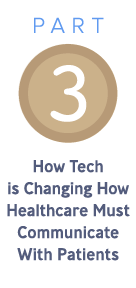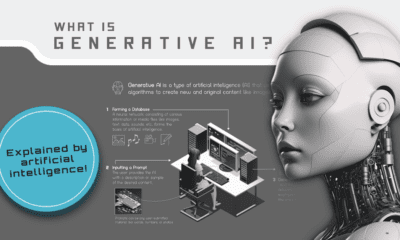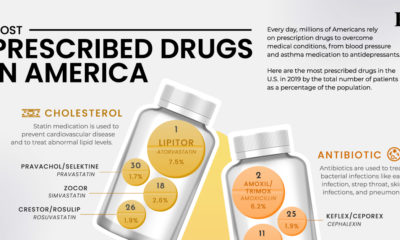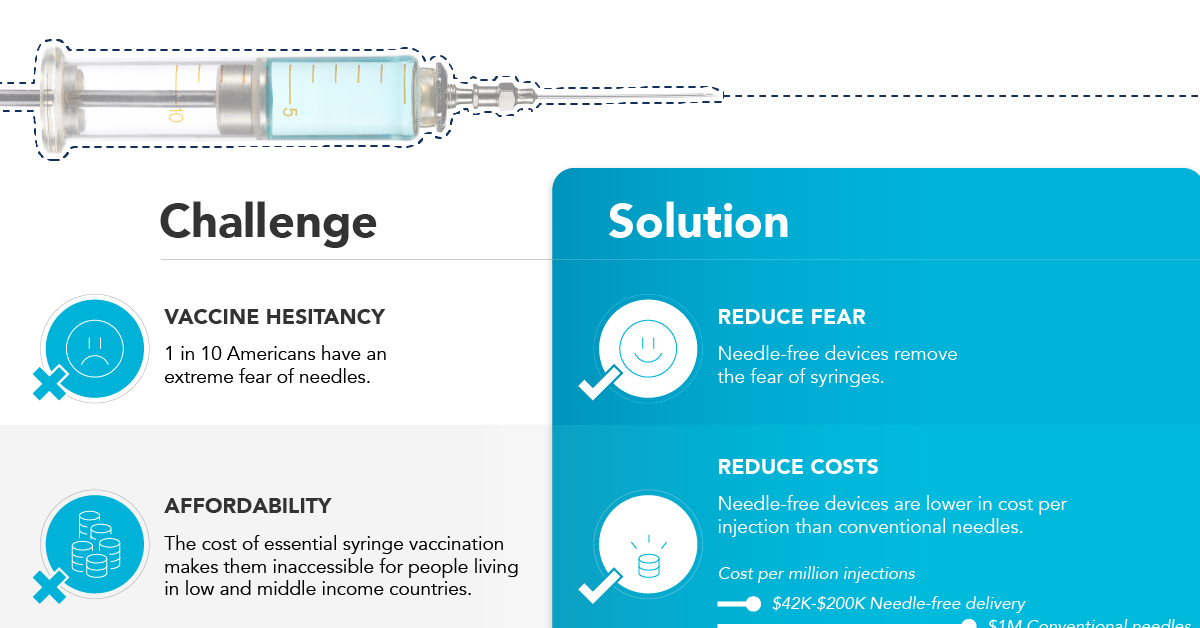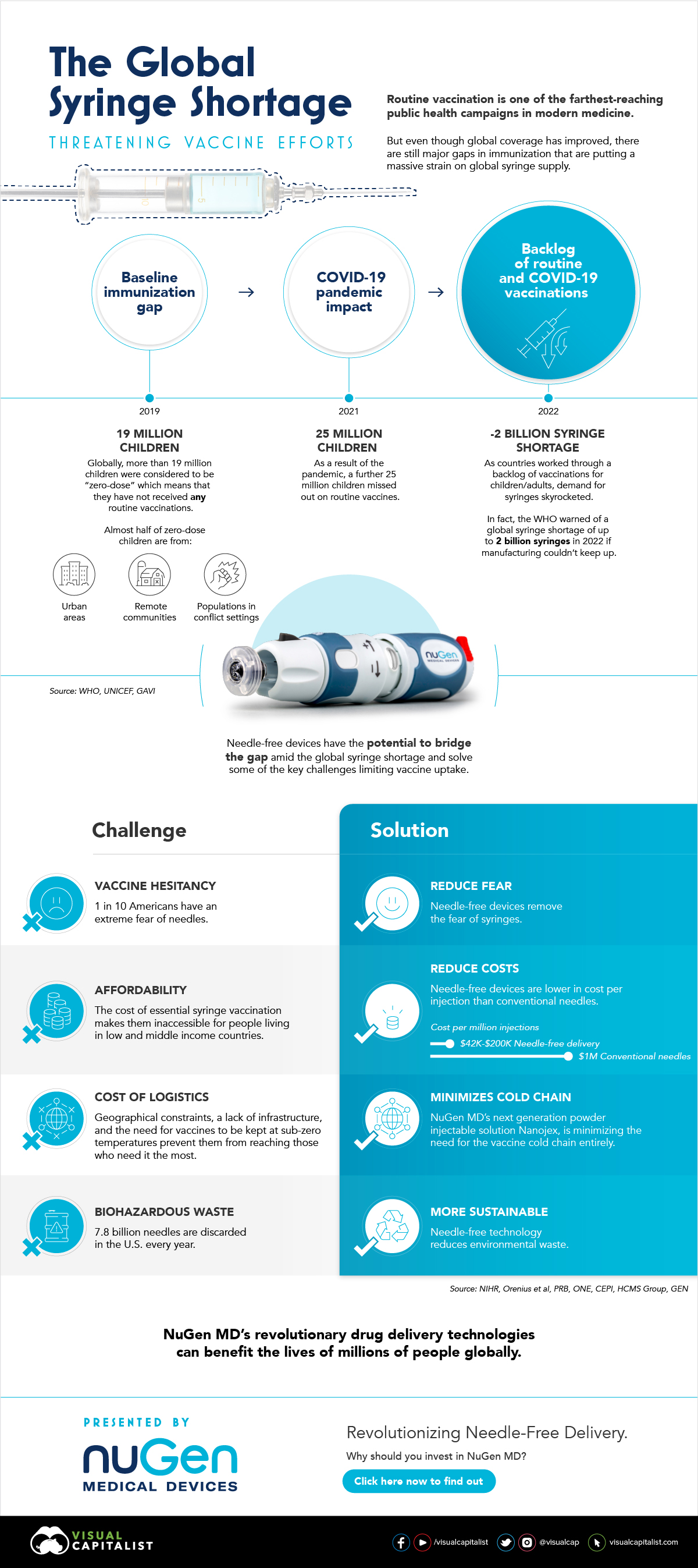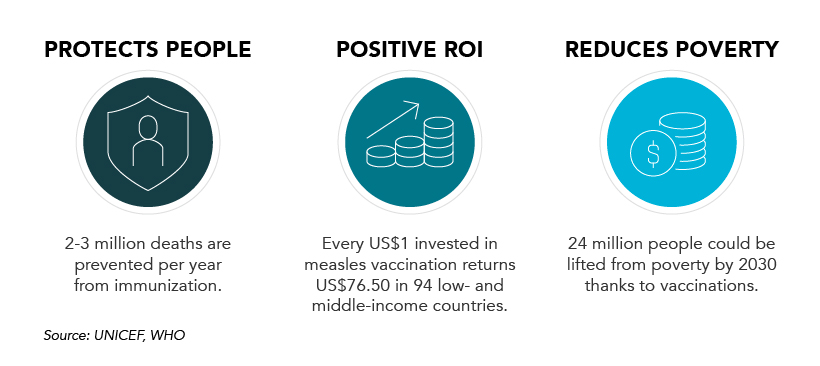To keep up with the rising demands of empowered patients, physicians and pharma businesses regularly test innovative treatments and medicines during rigorous clinical trials. But one misguided move can trigger a domino effect, such as when the wrong patients are selected for a clinical trial. Today’s infographic comes to us from Publicis Health, and it highlights why the current model of clinical trial recruitment urgently needs to change.
The Cost of Clinical Trials
Clinical trials help to determine if a new treatment, drug, or device is safe for the larger patient population. Patients are at the heart of these clinical trials, and poor patient recruitment has dire consequences:
50% of sites enroll one or no patients in studies 85% of clinical trials fail to retain enough patients 80% of all clinical trials fail to finish on time
A single trial can cost anywhere from $44 million to $115 million. But here’s the kicker – according to a CenterWatch survey, delays can cost a trial between $600,000 and $8 million per day. For these reasons, it’s crucial for pharma trial sponsors to find the right fit for clinical trials from the start.
A 360° View
The healthcare industry is moving towards a people-based marketing approach, to discover and engage the right patient one-on-one. Advanced technology and connected patient data work in tandem with millions of real-time consumer behaviors, creating a rich and accurate profile of the perfect patient match. The use of artificial intelligence, machine learning, and predictive analytics unearth further insights, weighting those patients with the behavioral tendencies most suited for the trial: Omni-channel targeting Actively reaching out to patients, wherever they are. Predictive analytics Continually refining media channels and messaging to further patient interest. Ongoing communications Nurturing relationships with patients, starting with the initial outreach.
Transforming Value
Applying a people-based approach to patient recruitment has a myriad of benefits, many of which live on long after the original trial’s completion. As clinical trials are successfully completed on time – allowing new drugs to reach the market faster than before – patients will benefit from easier access to groundbreaking treatments. This is part five of a seven part series. Stay tuned by subscribing to Visual Capitalist for free, as we wrap up with the final two transformative forces shaping the future of healthcare. on In the above infographic from NuGen Medical Devices, we explore the factors leading to the syringe shortage and take a look at the company’s innovative needle-free solution that could play an important role in closing the immunization gap.
The Immunization Gap
Even before the COVID-19 pandemic, millions of people around the world struggled to get access to routine vaccinations. In fact, as of 2019 more than 19 million children around the world were considered to be “zero-dose” which means that they did not receive any routine vaccinations. Moreover, when the COVID-19 pandemic hit, global immunization dropped even further with 25 million children missing out on routine vaccines in 2021 alone.
Why is Immunization So Important?
Vaccinations prevent against over 20 life-threatening diseases and save between 2-3 million deaths per year, making them—as the WHO describes—the foundation of healthcare systems and an indisputable human right. As countries work through a backlog of vaccinations to close the immunization gap that has worsened since the pandemic, demand for syringes has significantly increased.
The Result: A Global Syringe Deficit
In 2022, the WHO warned that we could see a shortage of up to 2 billion syringes if manufacturing can’t keep up. This could result in the severe disruption to routine vaccinations and promote unsafe recycling of syringes in order to administer vaccines. But the issue goes far beyond a supply shortage of syringes. COVID-19 has brought conventional syringe vaccines into sharp focus, with many criticizing the challenges associated with them. With conventional needles facing so many challenges, it’s no surprise that investors are taking interest in viable alternatives. What’s more, these alternatives don’t just apply to vaccinations, they can also work for people with diabetes, dentists, and pet care.
Enter Needle-free Devices from NuGen MD
Needle-free devices have the potential to bridge the gap in immunization amid the global syringe shortage, solve some of the key challenges limiting vaccine uptake, and more importantly, benefit the lives of millions of people.
How Do They Work?
NuGen’s needle-free devices use a simple spring-loaded mechanism which uses pressure to release the liquid drug and penetrate the skin. In less than one-tenth of a second, the drug is dispensed more safely and evenly compared to needle syringes. It’s also virtually painless and leaves no mark on the skin.
Interested in investing in NuGen Medical Devices? To learn more about their plans to pioneer the future of needle-free drug delivery, click this link now.


